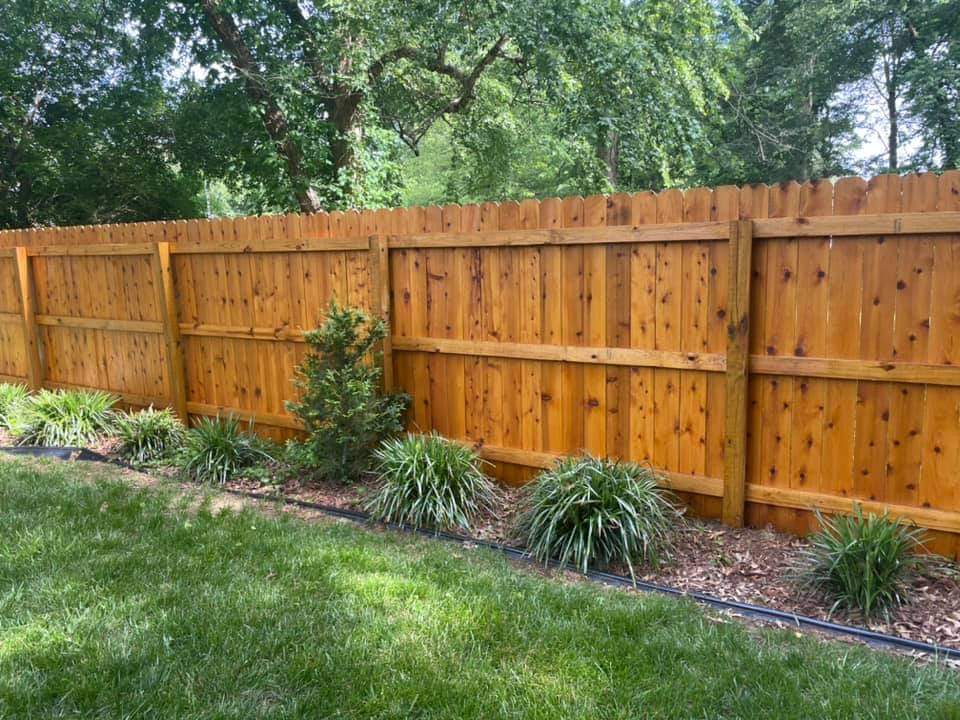Fence Staining 101: Every Little Thing You Need to Know for a Spectacular End Up
When it concerns improving the visual appeal and extending the life-span of your fencing, staining is a vital facet that requires interest to detail. The process of fencing discoloration entails more than just selecting a shade and using it carelessly. From selecting the best kind of tarnish to diligently preparing the surface and performing the application technique, every action plays a substantial duty in achieving a perfect surface. By comprehending the basics of fence staining, you can raise the look of your outside space and ensure the security of your fence against various elements.
Picking the Right Discoloration
Choosing a proper discolor for your fence is crucial in maintaining its long life and improving its aesthetic appeal. When picking the right tarnish, there are a number of elements to consider. Determine the kind of wood your fencing is made of, as different wood varieties react in different ways to different stains. Cedar may call for a different kind of discolor contrasted to yearn. Next off, think about the wanted look you intend to accomplish. If you prefer a more all-natural look that permits the wood grain to reveal via, a clear or semi-transparent discolor would certainly be appropriate. If you desire to include color or conceal blemishes in the wood, a strong tarnish might be the much better choice. It is also important to consider the degree of maintenance you are prepared to devote to. Some stains may need even more regular reapplication than others, so pick a stain that lines up with your upkeep choices. By taking these factors into account, you can choose a tarnish that not just protects your fencing yet also enhances its general look.
Preparing Your Fence
Prior to applying the chosen tarnish to your fencing, it is crucial to adequately prepare the surface area to make certain optimal outcomes and long life. The very first step in preparing your fence is to cleanse it completely.
After cleaning, inspect the fencing for any type of damage such as loose boards, nails, or screws. See to it to tighten any kind of loose components and change any type of broken components. Sanding the fencing is the next important step to ensure a smooth surface area for the stain to stick to. Utilize a medium-grit sandpaper to remove any kind of rough places or old discolor that might be peeling.
Last but not least, secure any areas you do not want to tarnish by utilizing painter's tape and plastic bed linen - Fence Staining - Fence Staining. This will certainly make sure tidy lines and avoid unintended staining of various other surface areas. Correctly preparing your fencing will not only improve the last appearance yet also add to the long life of the stain

Applying the Stain
To attain a specialist surface when discoloring your fence, ensure that you use the discolor in even strokes adhering to the timber grain direction. Prior to beginning, shake or mix the discolor thoroughly to mix any resolved pigments. Utilizing a high-grade brush or a paint sprayer, begin applying the tarnish from the top of the fencing, working your means down to stop drips.
Work in convenient sections to preserve a damp side and avoid lap marks. If making use of several cans of tarnish, mix them with each other to guarantee shade consistency. Watch out for any type of drips or runs and smooth them out instantly. After finishing the entire fencing, permit appropriate drying out time based on the supplier's directions prior to applying a 2nd coat if wanted. Proper application is crucial to attaining a gorgeous and resilient finish on your fence.
Tips for a Specialist Complete
Attaining a professional surface on your stained fencing requires meticulous interest to information and adherence to finest techniques in application strategies. Tidy the fencing of any kind of dirt, particles, or old discolor using a pressure washing machine or a rigid brush and soapy water. Select a top quality discolor that is appropriate for your fencing kind and environment problems.
When it pertains to using the stain, use a brush, roller, or sprayer for an also and constant coat. Operate in workable areas to stay clear of drying lines and overlap damp sides to stop lap marks. Pay special interest to edges, edges, and hard-to-reach locations for consistent insurance coverage. Allow the discolor to dry totally according to the maker's guidelines prior to taking into consideration a 2nd coat. Following these pointers will certainly help you attain an go to my site expert finish that boosts the appeal and durability of your fencing.
Maintenance and Treatment
Making certain normal upkeep and appropriate treatment of your tarnished fencing is vital for preserving its appearance and architectural stability over time. To maintain the stunning finish attained via discoloration, it is recommended to inspect the fence at the very least yearly for any type of signs of wear, damages, or staining. Attending to problems quickly can avoid them from escalating and needing more comprehensive repair services.
Routine upkeep jobs include cleansing the fence with a mild cleaning agent and water to eliminate dust, crud, and mildew that can build up with time. Additionally, cutting any type of plant life that enters contact with the fencing can stop damage from overgrowth. Check the discolor for indicators of fading or deteriorating, and think about applying a maintenance coat every 2-3 years to maintain the fencing looking fresh and vibrant.
Appropriate treatment additionally involves securing the tarnished fence from extreme elements by considering elements such as sunlight exposure, wetness, and temperature variations - Fence Staining Service. Using a safety sealer can additionally boost the long life of the stain and secure the timber from ecological damages. By adhering to these maintenance practices, you can make certain that your stained fencing remains a lovely and resilient asset to your home for several years ahead
Verdict
